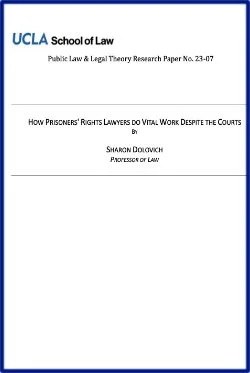Edited by Kristen M. Budd, David C. Lane, Glenn W. Muschert, and Jason A. Smith
The year 2023 marks 50 years of mass incarceration in the United States. This timely volume highlights and addresses pressing social problems associated with the US’s heavy reliance on mass imprisonment. In an atmosphere of charged political debate, including ""tough on crime"" rhetoric, the editors bring together scholars and experts in the criminal justice field to provide the most up-to-date science on mass incarceration and its ramifications on justice-impacted people and our communities. This book offers practical solutions for advocates, policy and lawmakers, and the wider public for addressing mass incarceration and its effects to create a more just, fair and safer society.
Bristol, UK: Bristol University Press, 2023. 128p.





















